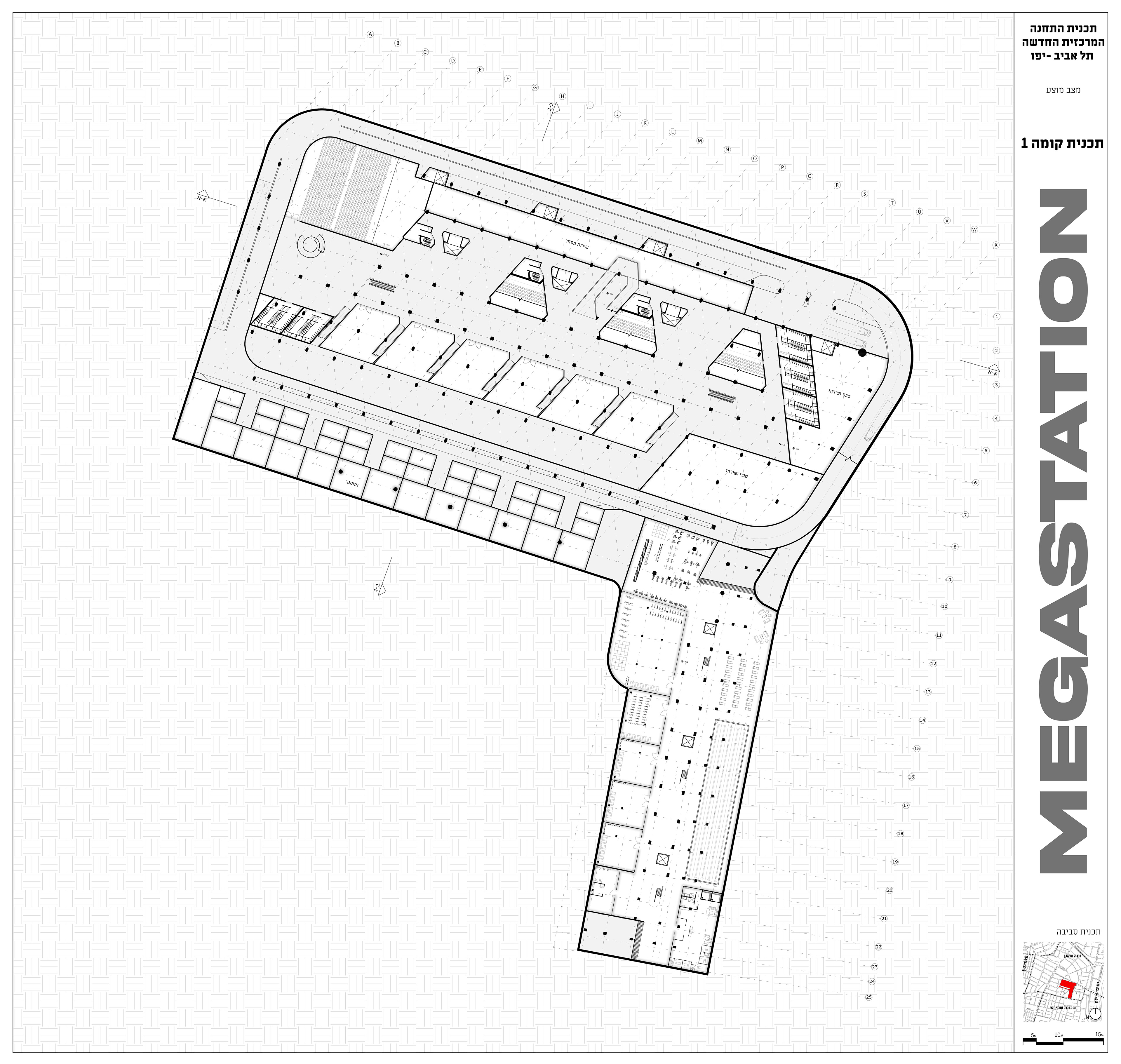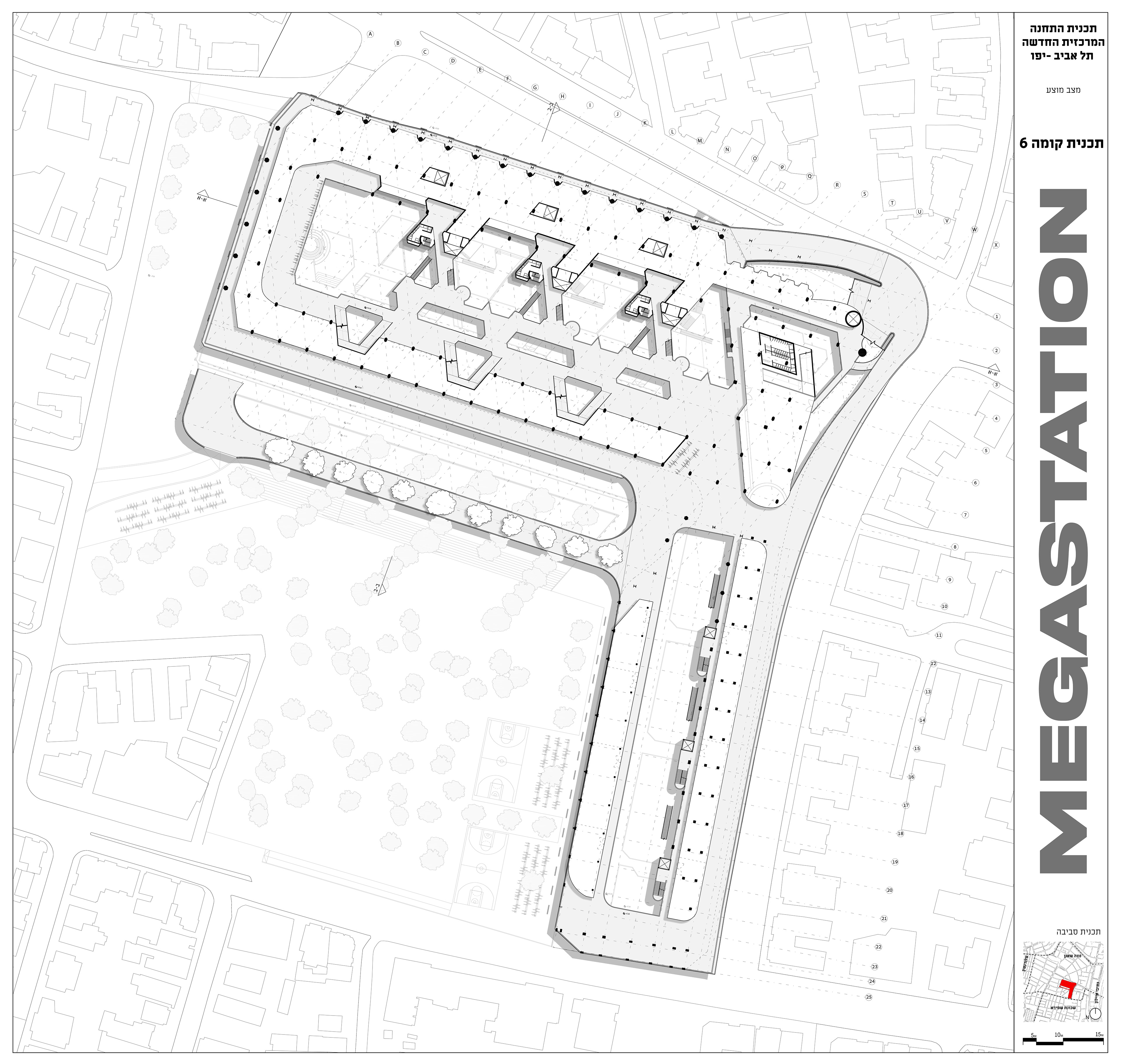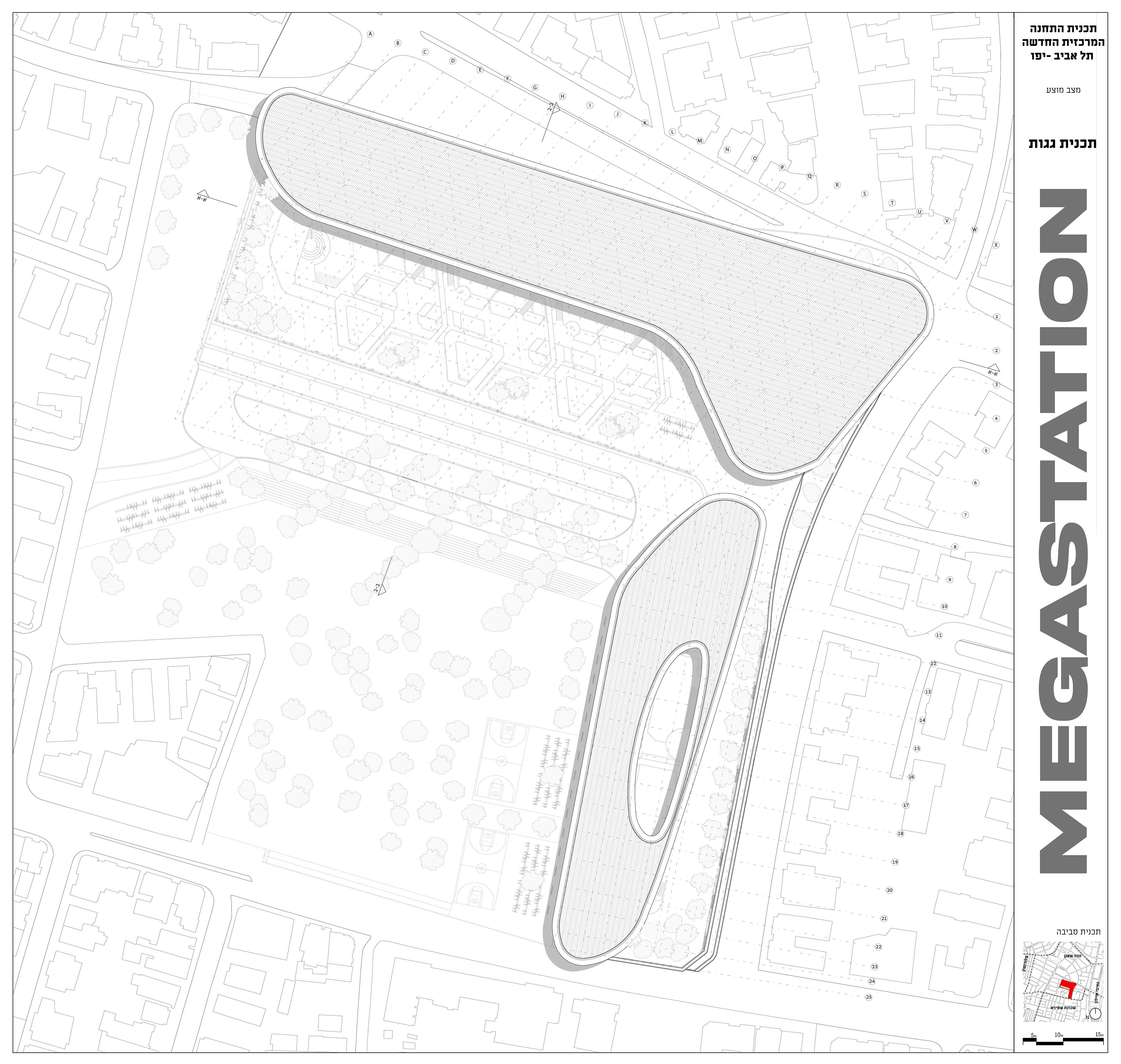The devastation caused by the world wars brought the modern movement to explore innovative planning concepts aimed at creating a new and improved world. However, some of these ideas were so radical that they resulted in 'wounded' urban spaces, some of with we continue to grapple with today. One such concept is the Megastructure, designed to create self-sufficient living environments by gathering human activity under a single structure. This led to the emergence of isolated buildings that function independently from their surroundings, giving rise to 'white elephants' that disrupt urban life in city centers.
In this project, I propose a framework for analyzing megastructural buildings within their urban contexts, which will reveal their urban autonomy vs dependence. By understanding and evaluating these structures in relation to urban dynamics, we can develop a vision of a better and more equitable urban landscape.
The focus of the project is the New Central Station in Tel Aviv-Yafo, a prime example of megastructural architecture in Israel. Designed by architect Ram Karmi as a 'city under a roof,' the station currently appears as an foregin entity in the southern part of the city, creating many urban challenges. Nonetheless, its architecture includes an internal network of streets and significant transportation systems that holds a considerable potential to improve urban life. My intervention aims to physically connect the station to the surrounding urban fabric and existing buildings. Additionally, I propose programmatic uses that will invigorate the massive structure while allowing flexibility in future planning.
A comparative study between megastructures in the world. By examining Noli maps of various megastructures around the world, one learns about the structural relationship between megastructures and the urban space around them.
Instead of measuring megastructures in terms of failure and success, I suggest examining them in their urban context and examining how independent and detached the structure is from its environment, or whether it creates a relationship of dependence with the urban space in which it exists.
General intervention scheme






Programmatic scheme - a scheme demonstrates the details of the uses of the station spaces while dividing them into spaces with a fixed program and spaces with a variable program







